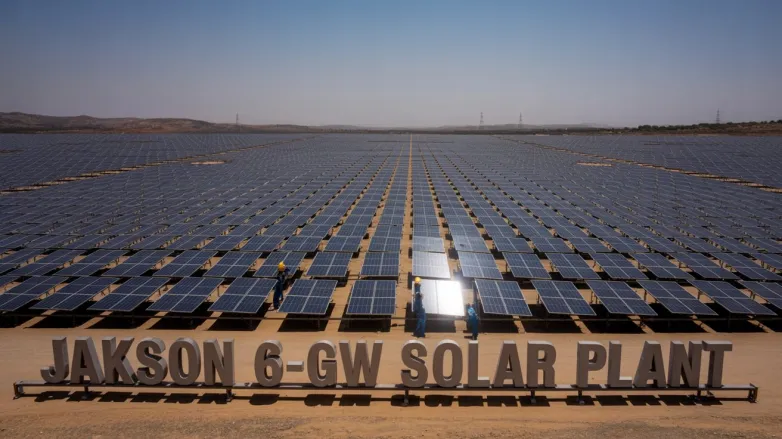Jakson Starts 6-GW Solar Plant in Madhya Pradesh
Nov 17, 2025 05:03 PM ET
- Jakson Group kicks off INR 80B, 6-GW solar mega-plant in Maksi, MP, building India’s first fully integrated wafer-cell-module hub; modules by May 2026, cells by September.

India’s Jakson Group has broken ground on a 6-GW integrated solar manufacturing complex in Maksi, Madhya Pradesh, with an investment of INR 80 billion (USD 902.6 million). Spanning 113.5 acres, the site will be the state’s largest integrated solar facility and aims to establish India’s first fully integrated wafer, cell and module ecosystem.
Phase One will install 4 GW of module and 3 GW of cell capacity, with backward integration into ingots and wafers. Phase Two will add a 6-GW wafer plant and complete remaining cell and module capacities. Module production is targeted for May 2026, with cell manufacturing slated for September 2026.
What technologies and supply-chain localization will Jakson deploy across ingot-to-module lines?
- Ingoting: Monocrystalline Czochralski (n-type grade), large-diameter pullers (M10/G12), high-purity quartz crucibles and graphite components localized via Indian refractories/quartzware suppliers; local sourcing of process gases and utilities (argon, nitrogen).
Wafering: Diamond-wire cutting with kerf-loss recovery, slurry-free sawing, inline texturing for mono; localization of wire, consumables, and CMP/clean chemistries (HF, HCl, NaOH) through Indian chemical makers; domestic recovery/recycling of silicon fines and wastewater. - Cell tech: N-type TOPCon as the workhorse (oxide/poly-Si passivation via LPCVD/PECVD), SMBB-ready metallization; pilot HJT line optionality with PVD sputtering and low-temp curing to future-proof efficiency roadmap; localization of diffusion tubes, PECVD/LPCVD spares, screen-printing pastes (with Indian-foreign JV for silver/copper), and process gases.
- Metallization and plating: Shift toward reduced-silver, copper-ready architectures (nickel/copper plating), laser contact opening; domestic supply of ribbons, tabbing wire, and conductive adhesives.
- Module assembly: High-power bifacial glass-glass, half-cut, high-density/SMBB interconnection; M10/G12 formats with 72/78-cell layouts; encapsulants (EVA/POE co-laminates), backsheets, junction boxes, and connectors sourced from Indian manufacturers; frames from local aluminum extruders; solar glass from domestic float/solar glass producers.
- Automation and QA: High-throughput stringers, bussing and lamination with inline EL/PL/IV, UV/humidity stress testing; localization of conveyors, testers, and factory software via Indian automation partners.
- Materials ecosystem: Domestic tie-ups for chemicals (acids/solvents), specialty gases, solder alloys, sealants, packaging, and pallets; on-site recycling of glass, frames, and electrical scrap to build circularity.
- Power and utilities: On-site captive renewables and heat-recovery systems; local EPCs for water treatment, ultrapure water, and effluent recycling to cut import dependence on utility skids.
- Logistics and compliance: Sourcing aligned with India’s PLI/ALMM value-add thresholds; rail-linked inward logistics for raw materials and outward for finished modules to deepen supply-chain localization.
Also read

